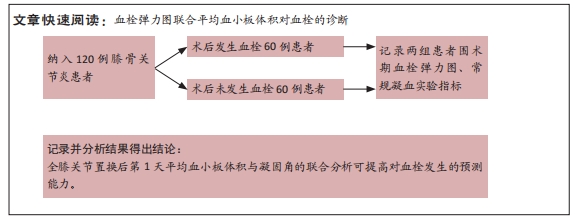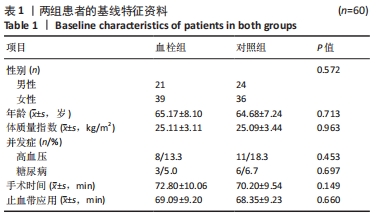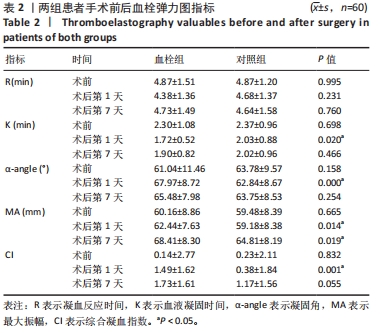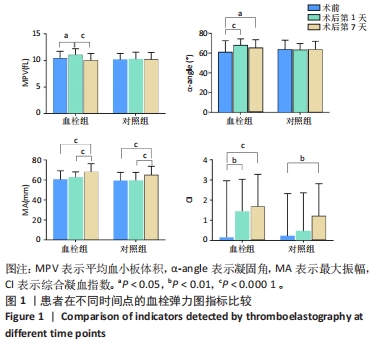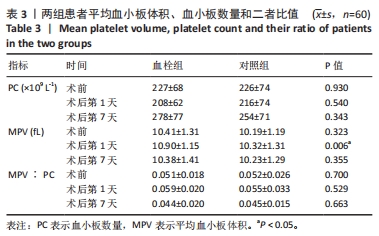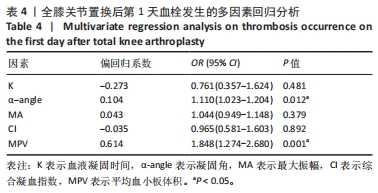[1] SHARNOFF JG, DEBLASIO G. Prevention of fatal postoperative thromboembolism by heparin prophylaxis. Lancet. 1970;2(7681):1006-1007.
[2] ALMEGREN MO, ALHEDAITHY AA, ALOMRI AS, et al. Venous thromboembolism after total knee and hip arthroplasty. A retrospective study. Saudi Med J. 2018;39(11):1096-1101.
[3] CHANG MJ, SONG MK, KYUNG MG, et al. Incidence of deep vein thrombosis before and after total knee arthroplasty without pharmacologic prophylaxis: a 128-row multidetector CT indirect venography study. BMC Musculoskelet Disord. 2018;19(1):274.
[4] AN VV, PHAN K, LEVY YD, et al. Aspirin as Thromboprophylaxis in Hip and Knee Arthroplasty: A Systematic Review and Meta-Analysis. J Arthroplasty. 2016;31(11):2608-2616.
[5] GASPARYAN AY, AYVAZYAN L, MIKHAILIDIS DP, et al. Mean platelet volume: a link between thrombosis and inflammation? Curr Pharm Des. 2011;17(1): 47-58.
[6] DÍAZ JM, BOIETTI BR, VAZQUEZ FJ, et al. Mean platelet volume as a prognostic factor for venous thromboembolic disease. Rev Med Chil. 2019; 147(2):145-152.
[7] KORNILUK A, KOPER-LENKIEWICZ OM, KAMIŃSKA J, et al. Mean Platelet Volume (MPV): New Perspectives for an Old Marker in the Course and Prognosis of Inflammatory Conditions. Mediators Inflamm. 2019;2019: 9213074.
[8] VOGIATZIS I, SAMARAS A, GRIGORIADIS S, et al. The Mean Platelet Volume in the Prognosis of Coronary Artery Disease Severity and Risk Stratification of Acute Coronary Syndromes. Med Arch. 2019;73(2):76-80.
[9] CANAN A, HALICIOĞLU SS, GÜREL S. Mean platelet volume and D-dimer in patients with suspected deep venous thrombosis. J Thromb Thrombolysis. 2012;34(2):283-287.
[10] ICLI A, AKSOY F, TURKER Y, et al. Relationship Between Mean Platelet Volume and Pulmonary Embolism in Patients With Deep Vein Thrombosis. Heart Lung Circ. 2015;24(11):1081-1086.
[11] 张玥,亓雪,刘湘,等.血小板参数、纤维蛋白原和D-二聚体对深静脉血栓形成的诊断价值[J].解放军医学杂志,2021,46(9):906-911.
[12] 陈银伟,徐锋.平均血小板体积与D-二聚体在神经外科患者术后下肢深静脉血栓形成中的预测价值[J].中国卫生检验杂志,2019,29(18): 2244-2247.
[13] KARON BS. Why is everyone so excited about thromboelastrography (TEG)? Clin Chim Acta. 2014;436:143-148.
[14] MAO C, XIONG Y, FAN C. Comparison between thromboelastography and conventional coagulation assays in patients with deep vein thrombosis. Clin Chim Acta. 2021;520:208-213.
[15] LIU C, GUAN Z, XU Q, et al. Relation of thromboelastography parameters to conventional coagulation tests used to evaluate the hypercoagulable state of aged fracture patients. Medicine (Baltimore). 2016;95(24):e3934.
[16] HERNANDEZ CONTE A, PEROTTI D, et al. Thromboelastrography (TEG) Is Still Relevant in the 21st Century as a Point-of-Care Test for Monitoring Coagulation Status in the Cardiac Surgical Suite. Semin Cardiothorac Vasc Anesth. 2017;21(3):212-216.
[17] SHARMA S, KUMAR S, TEWARI P, et al. Utility of thromboelastography versus routine coagulation tests for assessment of hypocoagulable state in patients undergoing cardiac bypass surgery. Ann Card Anaesth. 2018;21(2):151-157.
[18] 简长春,陈宇,陈诚,等.血栓弹力图评价关节置换后低分子肝素和利伐沙班的抗凝效果[J].中国组织工程研究,2019,23(4):499-504.
[19] BRILL JB, BADIEE J, ZANDER AL, et al. The rate of deep vein thrombosis doubles in trauma patients with hypercoagulable thromboelastography. J Trauma Acute Care Surg. 2017;83(3):413-419.
[20] GARY JL, SCHNEIDER PS, GALPIN M, et al. Can Thrombelastography Predict Venous Thromboembolic Events in Patients With Severe Extremity Trauma? J Orthop Trauma. 2016;30(6):294-298.
[21] WANG C, LIU Q, SUN L, et al. Application of thrombelastography in primary total knee and total hip replacement: a prospective 87 patients study. Blood Coagul Fibrinolysis. 2019;30(6):281-290.
[22] BROWN W, LUNATI M, MACEROLI M, et al. Ability of Thromboelastography to Detect Hypercoagulability: A Systematic Review and Meta-Analysis. J Orthop Trauma. 2020;34(6):278-286.
[23] BIAŁAS AJ, PEDONE C, PIOTROWSKI WJ, et al. Platelet distribution width as a prognostic factor in patients with COPD - pilot study. Int J Chron Obstruct Pulmon Dis. 2017;12:2261-2267.
[24] DJORDJEVIC D, RONDOVIC G, SURBATOVIC M, et al. Neutrophil-to-Lymphocyte Ratio, Monocyte-to-Lymphocyte Ratio, Platelet-to-Lymphocyte Ratio, and Mean Platelet Volume-to-Platelet Count Ratio as Biomarkers in Critically Ill and Injured Patients: Which Ratio to Choose to Predict Outcome and Nature of Bacteremia? Mediators Inflamm. 2018;2018:3758068.
[25] FARAH R, NSEIR W, KAGANSKY D, et al. The role of neutrophil-lymphocyte ratio, and mean platelet volume in detecting patients with acute venous thromboembolism. J Clin Lab Anal. 2020;34(1):e23010.
[26] ZHAO F, YU P, LV X, et al. Value of thromboelastography combined with anticoagulant detection in patients over 60 years of age with cardiovascular or cerebrovascular disease. Ann Palliat Med. 2021;10(5):5407-5416.
[27] RAY B, TINSLEY L, FORD L, et al. Trends of Platelet Volume Index Predicts Delayed Cerebral Ischemia After Subarachnoid Hemorrhage. World Neurosurg. 2018;111:e624-e631.
[28] CIL H, YAVUZ C, ISLAMOGLU Y, et al. Platelet count and mean platelet volume in patients with in-hospital deep venous thrombosis. Clin Appl Thromb Hemost. 2012;18(6):650-653.
[29] YURIDITSKY E, HOROWITZ JM, MERCHAN C, et al. Thromboelastography Profiles of Critically Ill Patients With Coronavirus Disease 2019. Crit Care Med. 2020;48(9):1319-1326.
|
